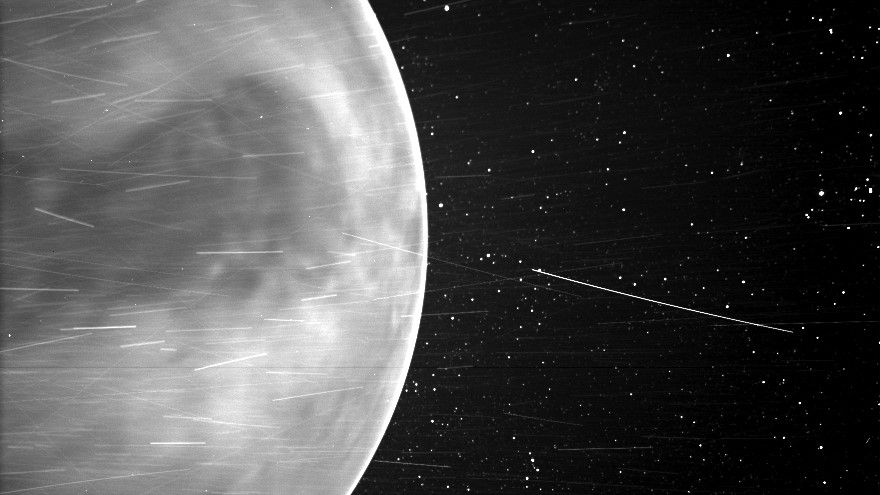Venus has a gooey flowing mantle jostling crust chunks on its surface

Venus may still be geologically active today, which could mean that Earth's planetary sibling is a good place for scientists to learn about early Earth and faraway worlds.
An international team of scientists used old radar images from NASA's Magellan mission, which ended operations in 2004, to study the Venusian surface. They found places where chunks of crust were sliding and turning like "pack ice," according to the researchers.
Since the lowlands the observations focused on are relatively young, the geological activity that triggers the motions happened not too long ago and may even be continuing today. The work suggests that Venus may be generating geological activity from deep within itself, unlike previous speculation that Venus' crust was one solid block like that of Earth's moon.
Related: Why Venus is back in the exploration limelight
Tectonic plates, where they occur, are more than just the jostling of a planet's rocky layer, or lithosphere. They are an important part of a planet's carbon cycle, and it's this system that allows a planet like Earth to presently support life. Earth didn't always have its modern carbon-cycle configuration: our planet was much hotter millions of years ago, and scientists think this new research about Venus' surface could answer questions about tectonic activity on a young Earth or on other planets.
Venus' geological activity isn't the same as that of Earth, where plates meet to produce dramatic mountain ranges like the Himalayas or massive subocean subduction regions like the Mariana Trench. But Venus' tectonic activity could be evidence that on a global scale underneath the planet's surface, a molten region called the mantle could be flowing.

Once scientists observed the signatures of these Venusian lithospheric blocks pulling apart, pushing together, rotating and sliding, the researchers created a computer model of this activity. They found that the slow motion of the planet's interior could explain what they observed.
Get the Space.com Newsletter
Breaking space news, the latest updates on rocket launches, skywatching events and more!
"Plate tectonics on Earth are driven by convection in the mantle. The mantle is hot or cold in different places, it moves, and some of that motion transfers to Earth's surface in the form of plate movement." Paul Byrne, associate professor of planetary science at North Carolina State University and lead author of the new work, said in a statement describing the findings.

"The thickness of a planet's lithosphere depends mainly upon how hot it is, both in the interior and on the surface," Byrne said. "Heat flow from the young Earth's interior was up to three times greater than it is now, so its lithosphere may have been similar to what we see on Venus today: not thick enough to form plates that subduct, but thick enough to have fragmented into blocks that pushed, pulled, and jostled."
Fortunately, there are three new missions from NASA and the European Space Agency currently in the works to study Venus like never before, potentially offering more observations to learn about the churning on Venus. In particular, scientists hope these missions will give them new, sharper data about the surface that can be used to improve research like this.
The new paper detailing this new work was published today (June 21) in the journal Proceedings of the National Academy of Sciences.
Follow Doris Elin Urrutia on Twitter @salazar_elin. Follow us on Twitter @Spacedotcom and on Facebook.
Join our Space Forums to keep talking space on the latest missions, night sky and more! And if you have a news tip, correction or comment, let us know at: community@space.com.

Doris is a science journalist and Space.com contributor. She received a B.A. in Sociology and Communications at Fordham University in New York City. Her first work was published in collaboration with London Mining Network, where her love of science writing was born. Her passion for astronomy started as a kid when she helped her sister build a model solar system in the Bronx. She got her first shot at astronomy writing as a Space.com editorial intern and continues to write about all things cosmic for the website. Doris has also written about microscopic plant life for Scientific American’s website and about whale calls for their print magazine. She has also written about ancient humans for Inverse, with stories ranging from how to recreate Pompeii’s cuisine to how to map the Polynesian expansion through genomics. She currently shares her home with two rabbits. Follow her on twitter at @salazar_elin.
